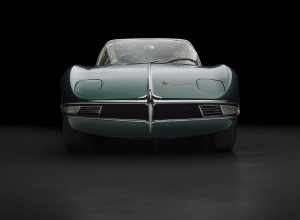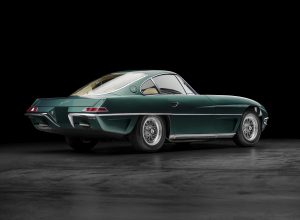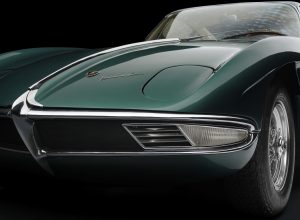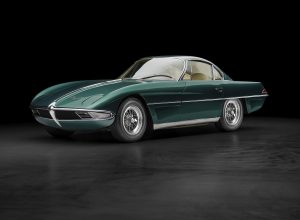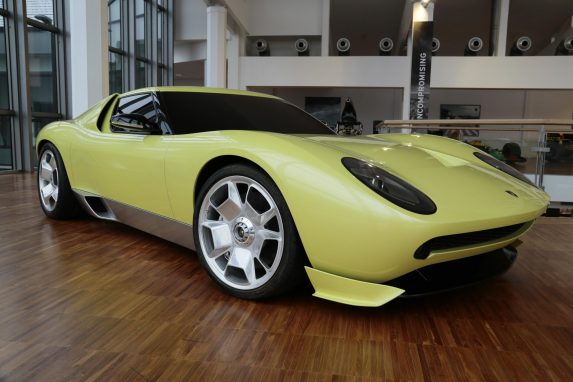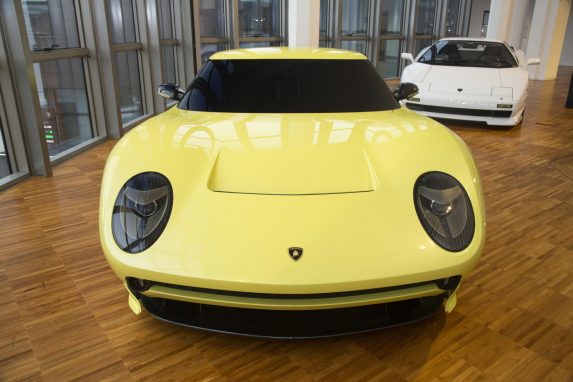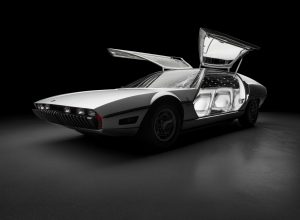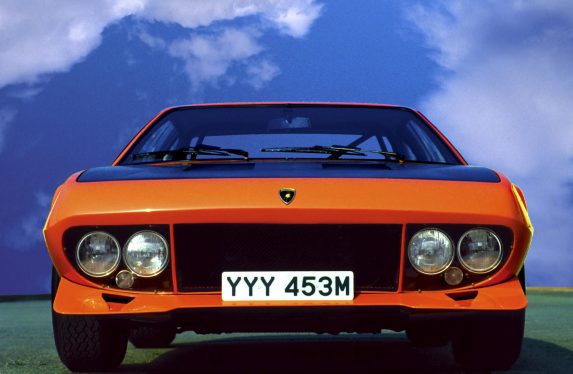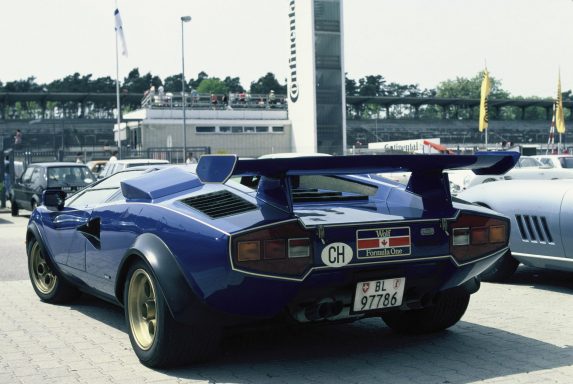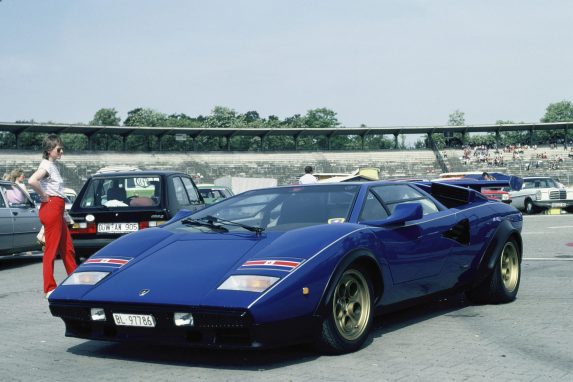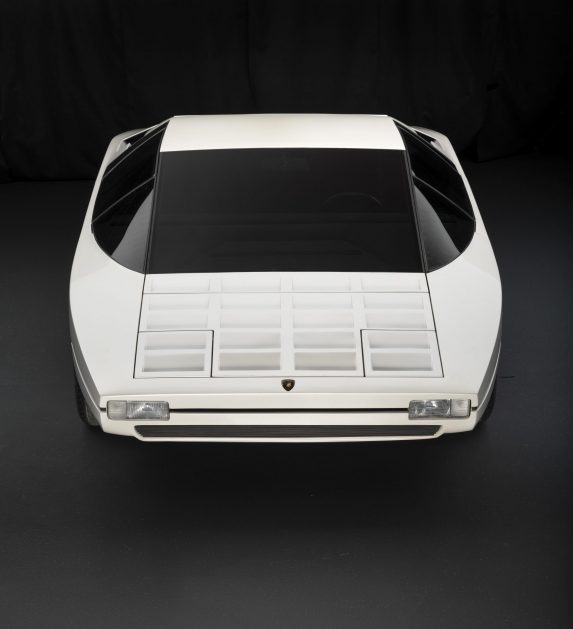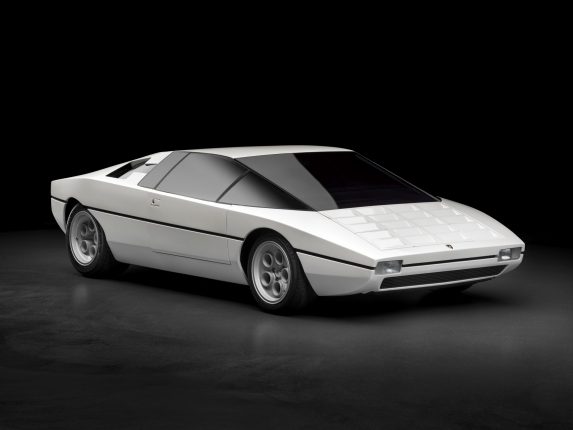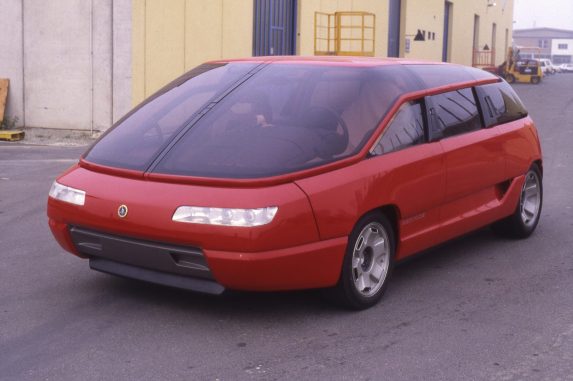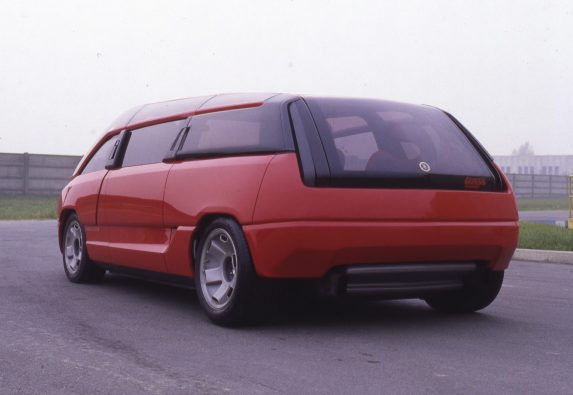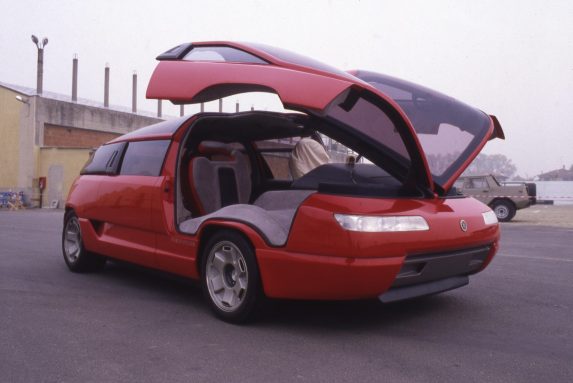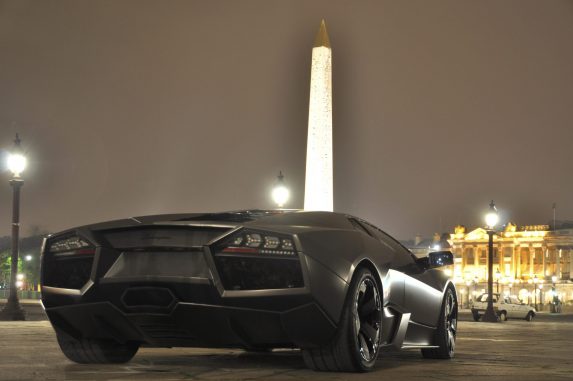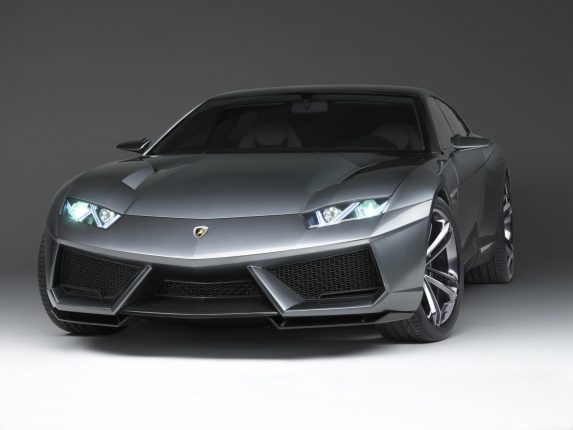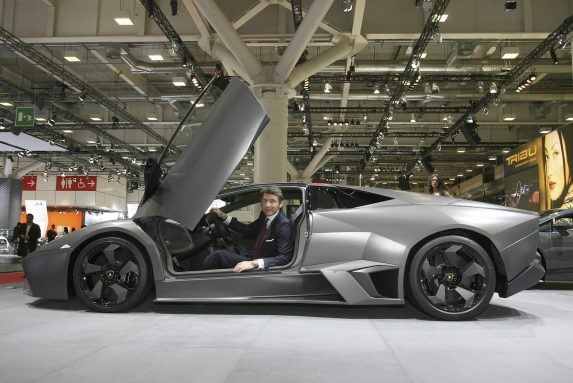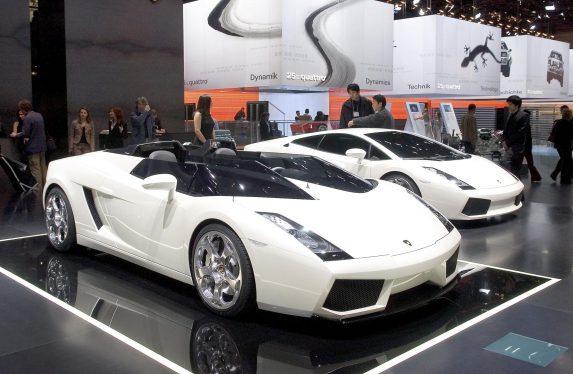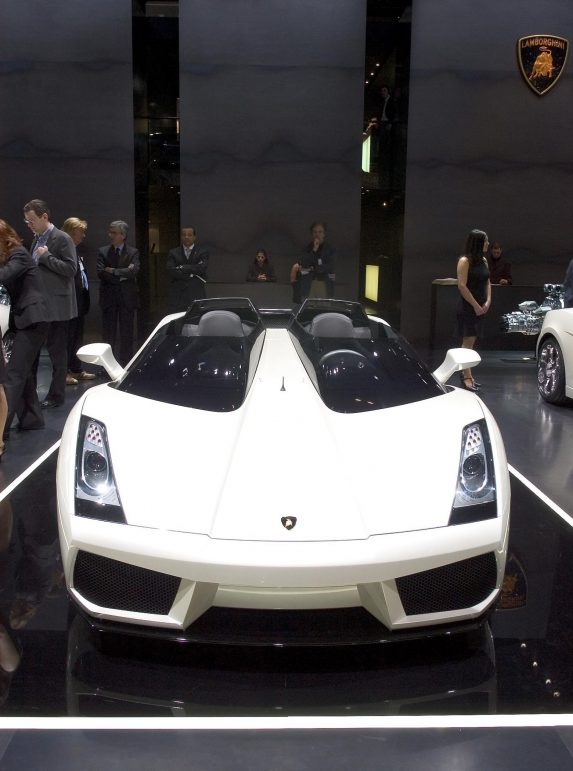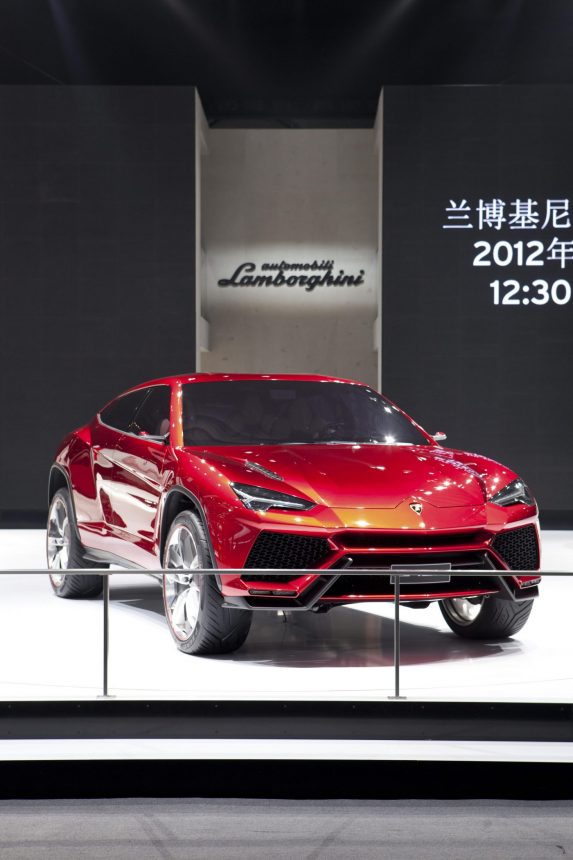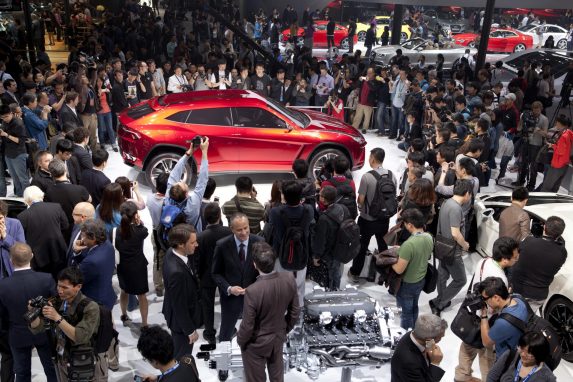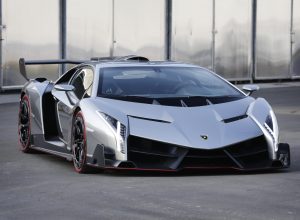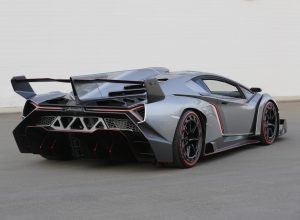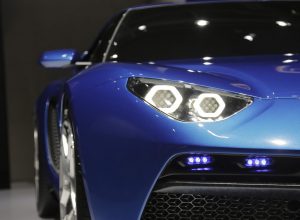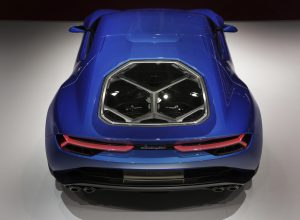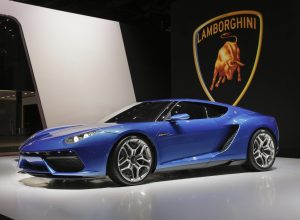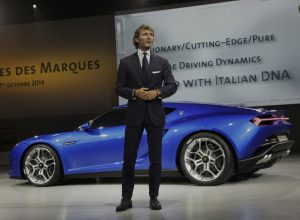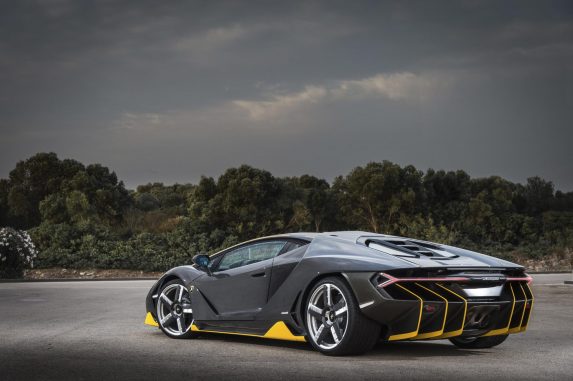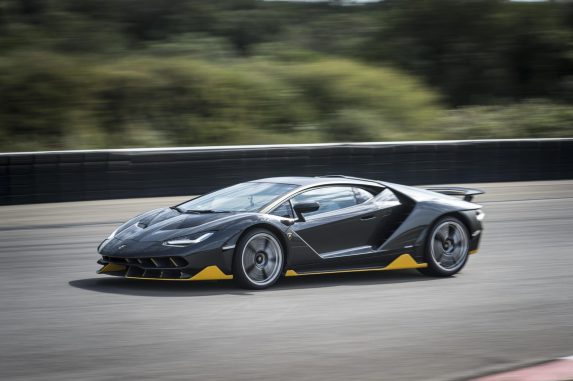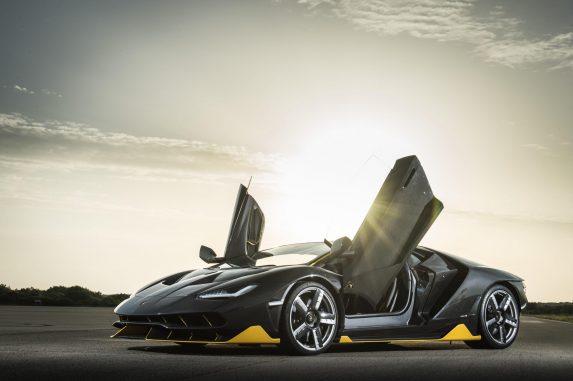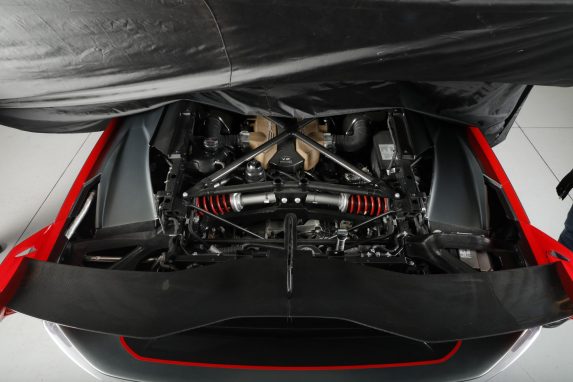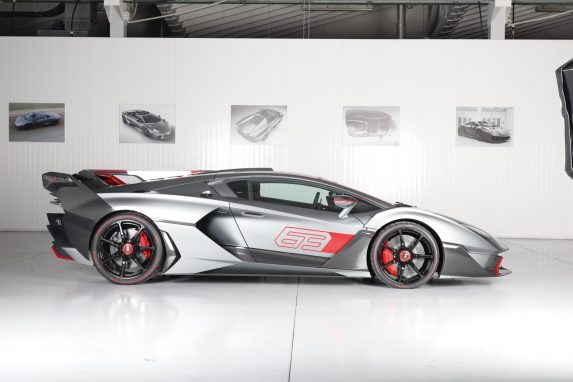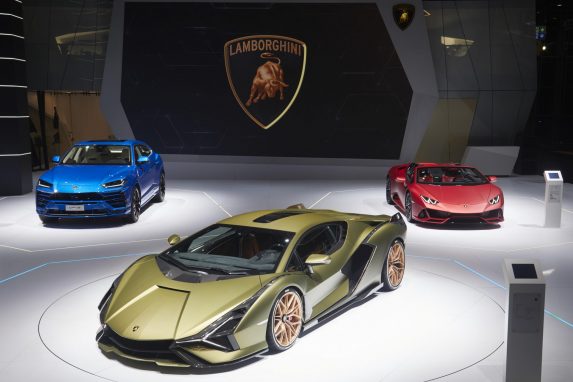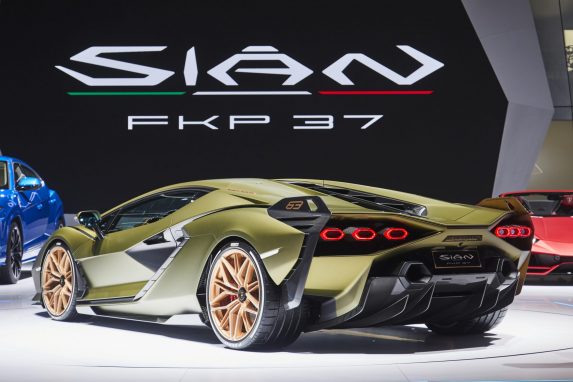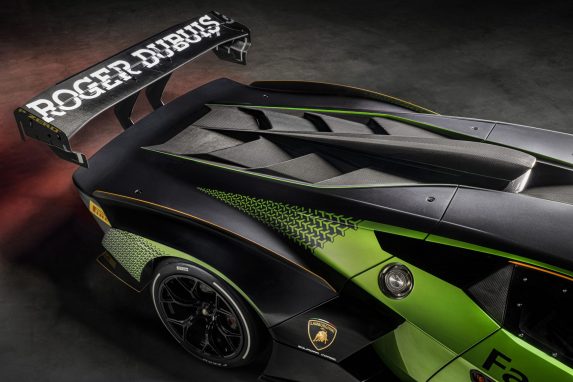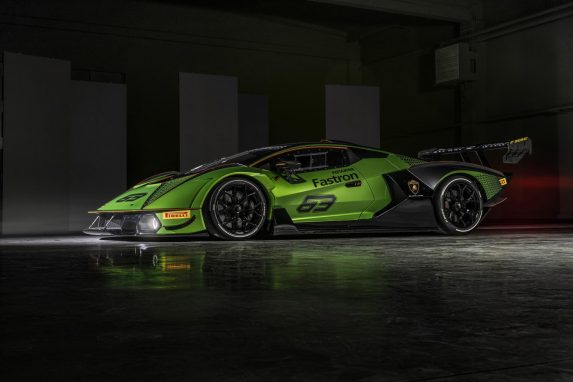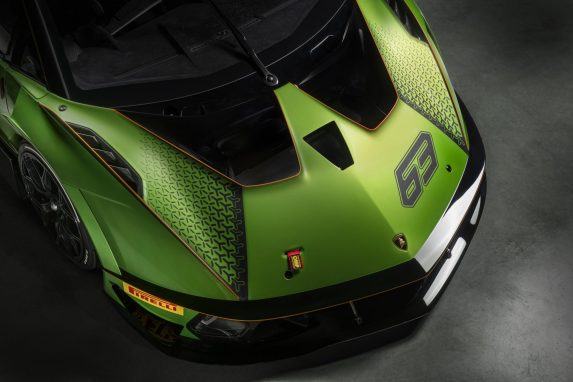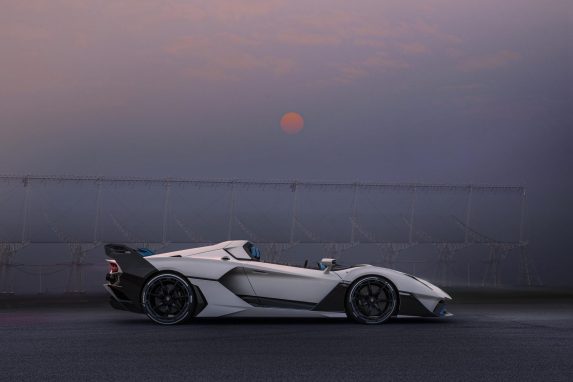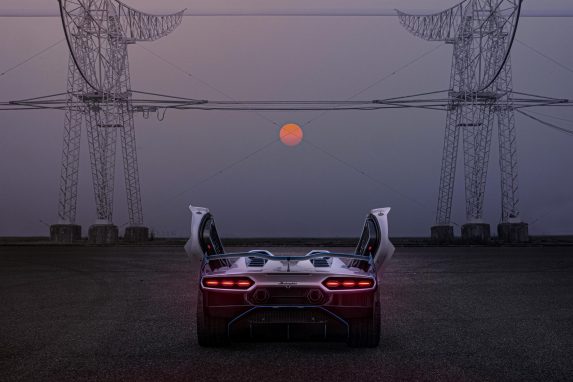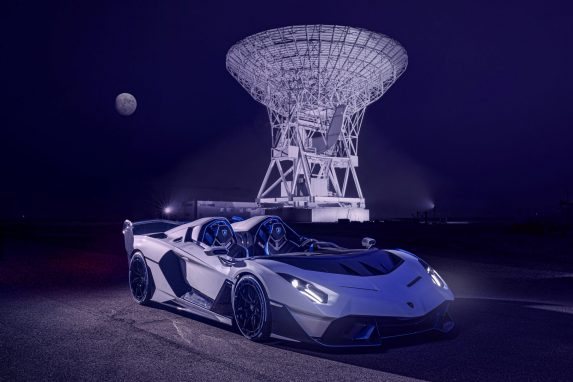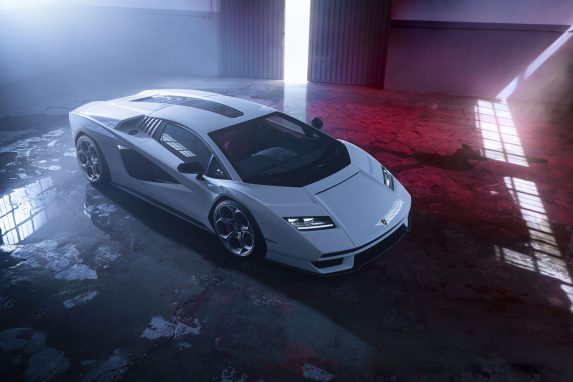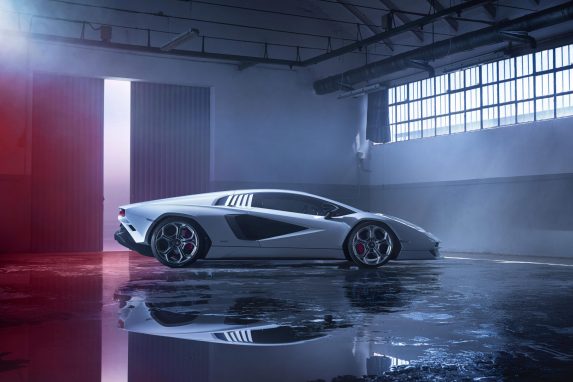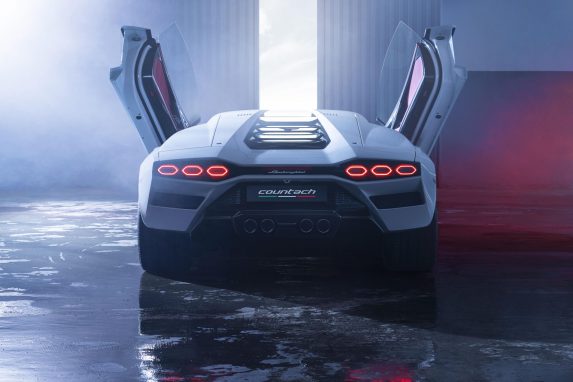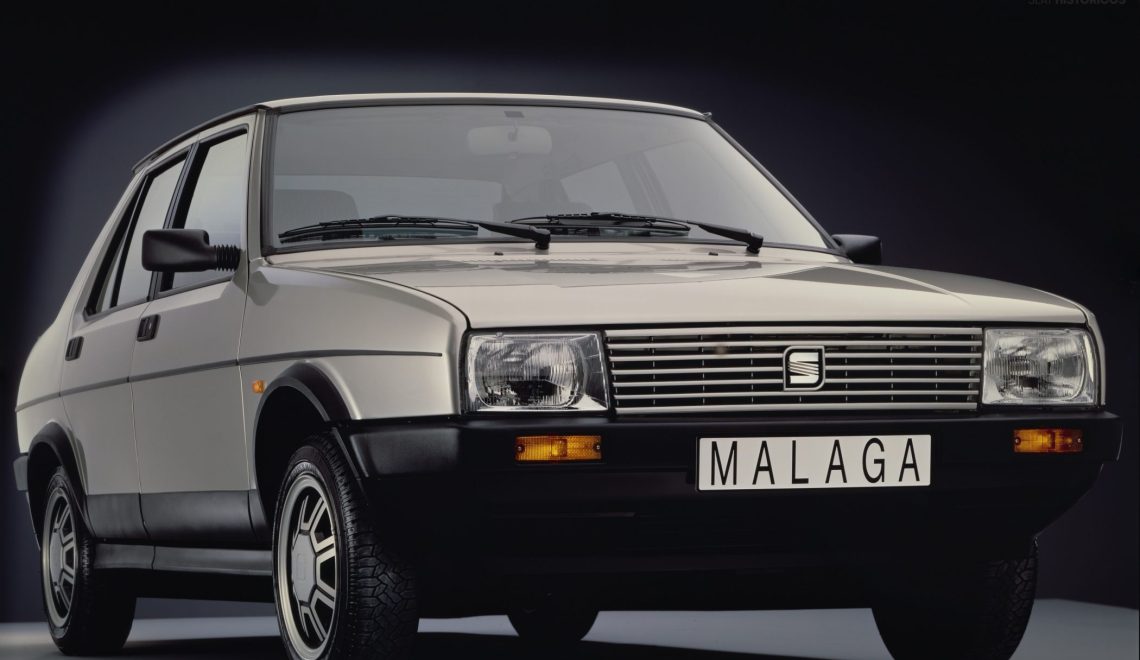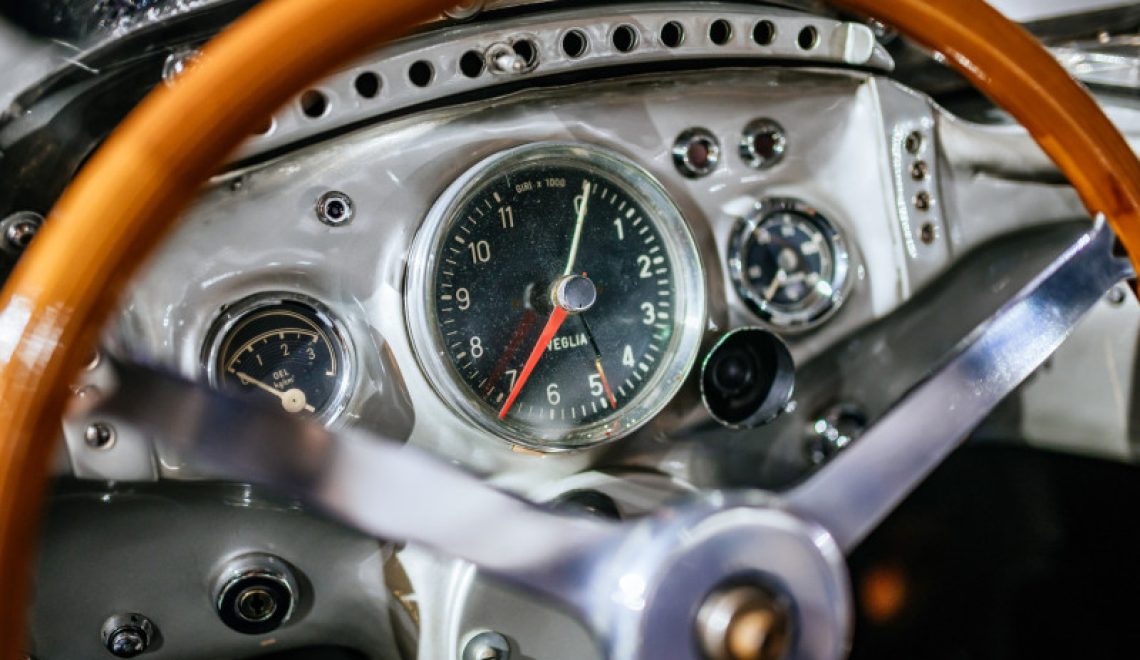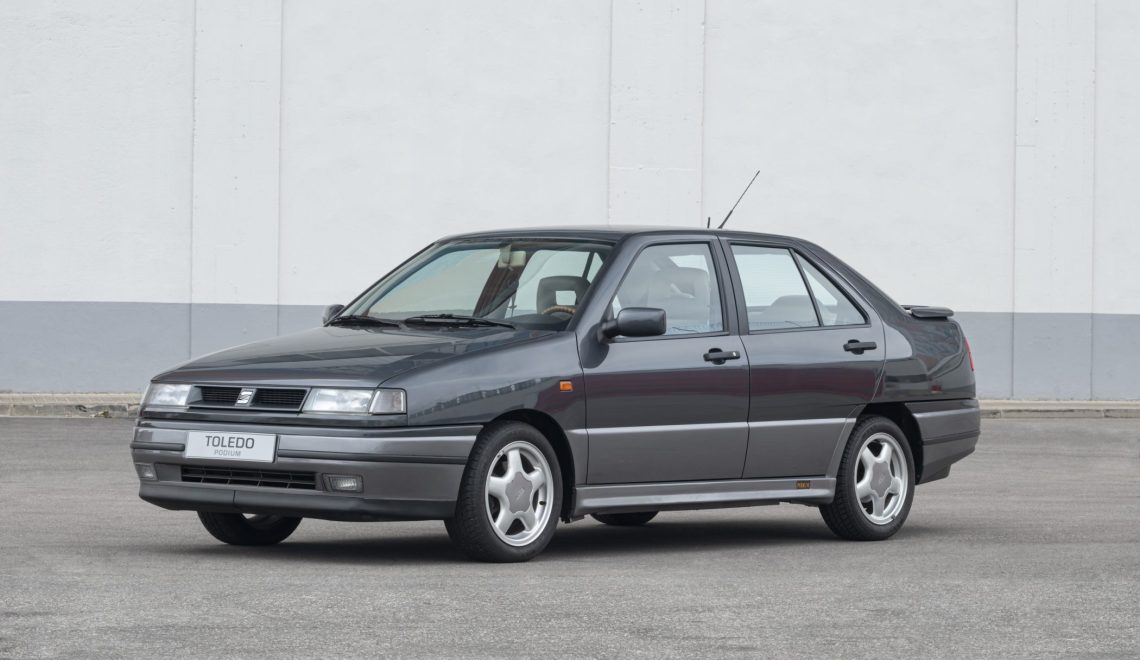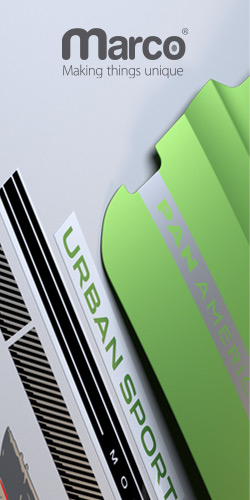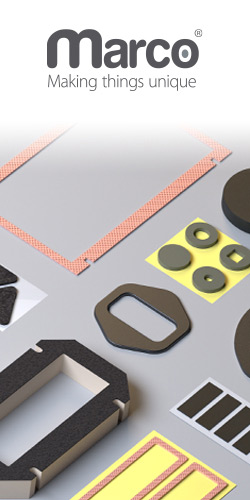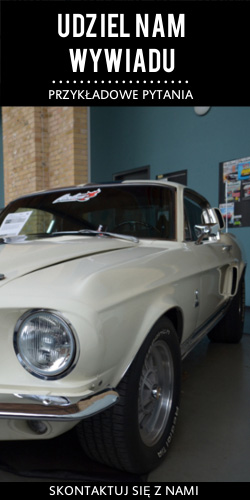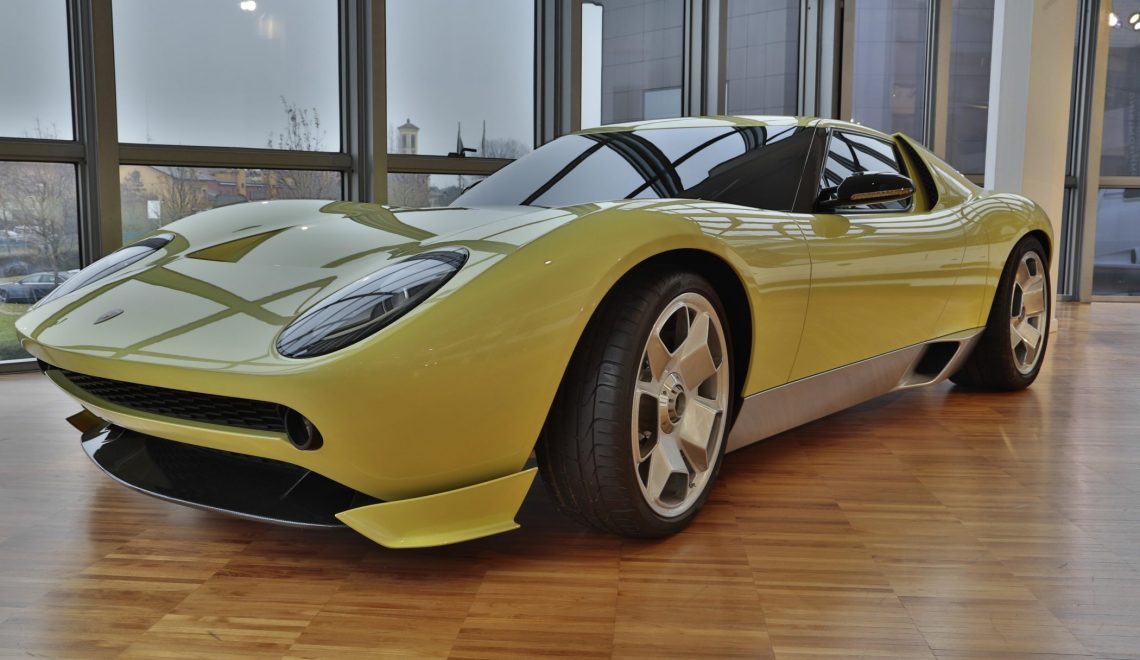
Ever since its foundation in 1963, Automobili Lamborghini has made one-off models that signal the technical and stylistic direction the company will take in the immediate future. These are design or technical prototypes or experimentation with new concepts to help develop the Lamborghinis to come. In the 1960s, these one-offs were very often show cars bound for motor show parades. In more recent years, the designation changed from “one-off” to a category created specially by Lamborghini: “few-offs”, essentially a limited run of cars for the most loyal customers that pre-empt or enhance the most advanced technical solutions that will be used on production cars in later years. The same formula will be repeated in just a few days at Monterey Car Week in California, where Automobili Lamborghini will present the prototype of its first 100% electric car.
The new, the innovative
The first Automobili Lamborghini one-off was the 1963 350 GTV, which gave rise to the 350 GT, its first production car. Then, within the 350-400 GT range, came the 350 GTZ, with two units made by Carrozzeria Zagato in Milan in 1965, based on the 350. Carrozzeria Touring, also based in Milan, built two 350 GTS open top units in 1965. In the same year, the 400 Monza was created, made by Carrozzeria Neri & Bonacini, which produced the tube frames of the 350-400 GT production cars. In 1966, the last model produced by Carrozzeria Touring was the 400 GT Flying Star, an innovative shooting brake which, in terms of practicality, would go on to inspire the Espada.
Miura and Marzal
In 1965, designed to be fitted with a rear engine, as envisioned for what would become the Miura, two design models were developed: one, called the P400 Tigre and made by Touring, and another, simply known as the P400, made by the newly created Italdesign of Giorgetto Giugiaro. However, this turned out not to be the right path given that they didn’t sufficiently maximize the revolutionary technical solution of the 12-cylinder engine in the rear transverse position and were never built at a 1:1 scale. However, on the Giugiaro version, the first appearance was seen of an unconventional door opening, forward and upward, but attached to the roof. It was the first seed of an idea that would germinate with the Countach.
The Marzal, the four-seater “glass” car, was presented in 1967 and was destined to become one of the best known show cars in the world, bringing many new ideas that would later be used in Lamborghini’s production. Firstly, four comfortable seats, one of the most common items on Ferruccio’s wish list, and the flat, sharp front end, and the hexagons that would later be found on the Espada. Furthermore, the hexagons would become one of the stylistic symbols of Lamborghini which, even today, feature frequently. The Marzal also sported very large gull-wing doors. “We did everything to keep them on the Espada,” engineer Stanzani would recall, “but the different volumes required by the front position of the V12 engine challenged this, and on the Marzal it was a rear transversely mounted 6-cylinder in-line engine that prevented us from doing so.”
At the 1968 Brussels Motor Show the Miura Roadster was showcased at the Bertone stand, captivating everyone from the very first glance. It was beautiful, but needed some developments that just weren’t possible. Indeed, Lamborghini was already working on two new projects: the first four-seater (the Espada prototype was presented in 1967) and the “small” car (the Urraco, which was developed in 1969), whose initial prototype was presented in 1968. In 1981, the Faena, produced by Carrozzeria Frua, was developed based on the Espada, offering a four-door version. At Sant’Agata Bolognese, people were beginning to think that there could be a market for a four]-door Lamborghini.
Bob Wallace, Ferruccio, Miura Jota
In 1970, Bob Wallace, the legendary Lamborghini test driver, revealed the Miura Jota to the world. It was his creation, supported personally by Ferruccio, who saw in that car, made by Bob in his free time using machinery and parts from the company, a fantastic prototype of technical experimentation. Every aspect of the Jota was built as if it was going to race, complying with touring car championship Appendix J regulations, and the mythology surrounding it made it clear to Lamborghini that its customers were always looking for something more. The concept of the special versions, an evolution of the standard model and still so important at Lamborghini, came from this very prototype. In response to customer demand, Lamborghini built four units of the Miura inspired by the Jota, known as the SV-J.
Getting better and better
The Countach LP 500 was presented as a concept car at the 1971 Geneva Motor Show. It was made to test the reactions of the public and potential customers to such a futuristic car. The success was immediate and the Countach LP 400 became a production car with minimal changes, keeping the scissor doors that from then on would be a distinctive feature of all 12-cylinder Lamborghini cars with a rear-mounted engine, starting from 1973.
In 1973 Bob Wallace did it again, creating the Urraco Rally with the same basic concept as the Miura Jota, based on the new Group 5 racing regulations and called Silhouette at the time, starting from a Urraco 250 base and taking the engine to 3 liters. From this prototype came the Urraco P300 in 1974, with 3-liter engine with dual overhead camshafts and chain-driven distribution, and the Silhouette in 1976, the open top version based on the Urraco 300, whose aerodynamics were inspired by the Rally.
The 1973 Jarama Rally, often referred to as the Jarama Bob, was Bob Wallace’s final creation, which followed the same concept as the two previous models, this time based on the 1970 Jarama 2+2. The aerodynamics were again revised in this case, combined with an overall lightening and, most importantly, the shift of the front V12 engine back toward the cockpit for better balance and weight distribution, considerably improving road performance.
In 1978, Walter Wolf, a loyal Lamborghini customer, supported by Giampaolo Dallara as external consultant, asked for some modifications to his Countach LP 400. Larger wheels and low-profile tires, contained by extensions that widened the wheel arches, allowed the use of larger brakes. The setup was revised to work best with the new solutions, and a large wing appeared at the rear of the car. It was from this very car, the Countach Wolf, equipped with 5-liter 12-cylinder engine, that the Countach LP 400 S was developed the following year. All subsequent Countach models would be based on this, with the same appearance and performance until 1990, when the model, which most strongly characterized the story of Lamborghini, went out of production.
It is all about being unique
In 1974, based on the Urraco P300, Bertone presented the Bravo: the wheelbase was shortened by 20 cm (7.9 in.) (in fact, the two back seats were missing), with more angular and extremely futuristic lines and “phone dial” wheels that would become one of the signature style features of the Countach LP 400 S. The Bravo was the first representation of the two-seater berlinetta, with a small rear-mounted engine (not a 12-cylinder engine) which, starting from the Gallardo (2003) and Huracán (2014), would become an important part of Lamborghini’s history.
In 1980, the Athon was created; built by Carrozzeria Bertone on the instructions of Lamborghini, to study the feasibility of a completely open top Silhouette. The style, which perfectly represents that of the cars from the 1980s, was so forward-thinking that with just a few modifications it could still be produced today. The “Roadster” concept at Lamborghini originated from this very car.
In search of a “third range”, Lamborghini sensed, much sooner than other car manufacturers, the new market demand for off-road vehicles with sports performance. To meet this demand, the LMA was created in 1982, the prototype of which would become the LM 002, which entered into production in 1986 and which today is considered the mother of the Urus. The LMA had a tube frame, front-mounted V12 engine and a maximum speed of over 200 km/h (124 mph): all features that had never been seen before on an off-road vehicle.
In 1985, Lamborghini started to experiment with a newly developed material. A textile fiber made from carbon fibers; incredibly rigid, robust and lightweight. The first application was on the Countach Evoluzione, a one-off based on the mechanics of the Countach Quattrovalvole, but with the bodywork made entirely of carbon fiber. The lines were rather boxy and almost primitive; there were significant limitations to working with this material that would go on revolutionize the ways that sports cars are built, but the essence was there. The Countach Evoluzione weighed 400 kg less than the Quattrovalvole production car and was very fast. With this car, the unbreakable bond and technological capabilities of Lamborghini with carbon fiber were born. Even today, Lamborghini has a unique and cutting-edge relationship with this material, which has increasingly grown in popularity, and which today also forms the supporting frame for the 12-cylinder cars produced at Sant’Agata Bolognese.
At the 1988 Turin Motor Show at the Carrozzeria Bertone stand, the Genesis was presented: in search of a fourth range, Lamborghini looked into the possibility of a 12-cylinder monovolume with the engine in the front longitudinal position. The front doors and the corresponding part of the roof had a wing opening and the performance was, for the type of car, extraordinary. However, the resources for developing new models were limited and, above all, directed at the development of what would become the new 12-cylinder GT.
With codename P132, the car that debuted in 1990 with the name Diablo started out in 1985, with design research commissioned from various designers. The mechanics, on the other hand, had already been decided upon and had to be a direct evolution from the Countach. After five years of work and fine-tuning, the Diablo was ready to stun the world. The mission of replacing such a legendary car as the Countach was a great responsibility that the Diablo shouldered with excellent results. Today, more than 30 years on, the Diablo enjoys the same love and attention from collectors as the Countach. The Diablo Roadster was developed in 1992, anticipating the design of the 12-cylinder open top super sports cars produced at Sant’Agata Bolognese; the Canto made by Carrozzeria Zagato in 1996 and which came very close to becoming a production car, and the Raptor, again built by Zagato, with the front opening of its hinged doors and roof at the same time. Added to these is the Pregunta, made in 1998 by Heuliez with large side air intakes positioned at the bottom and a super-modern style, and the L147 by the I.D.E.A. Institute in 1999.
Creating the ultimate sports car
The P140 project, aimed at creating a super sports car with a V8 or V10 engine, led to the creation of the Gallardo in 1987 and to the strengthening of the second range as the cornerstone of Lamborghini’s commercial success. The possibility of using different engines and different stylistic options were considered, with the right response found in the Calà designed by Giorgetto Giugiaro in 1995, unveiled at the Geneva Motor Show. The volumes and proportions are those found on the Gallardo, while the rounded lines would become sharper, in line with the typical Lamborghini style. An open top version of the Calà was also envisioned, showing Lamborghini’s intention of also making its berlinetta available as a roadster version.
The 2005 Concept S was the work of Luc Donckerwolke, the Director of Lamborghini Centro Stile at the time. The car, based on the Gallardo, was completely open, characterized by the cockpit intersected by a longitudinal cross piece separating the seats, and by particularly refined aerodynamics enhanced by a careful study of the flows passing under the car and harnessed for improved dynamic behavior.
The 2006 Miura Concept, created by Walter de Silva, the then Head of Design of the Audi Group, was a clear revival in modern form of the Miura of the 1960s and 70s which, in 2006, celebrated 40 years since its launch. It remained a design exercise but, in terms of purity of form and clean lines, it is still an example to be followed to this day.
In 2007, the Reventón was developed, with only 20 units produced and based on the Murciélago LP 640. The Reventón was a road car pushed to the limit, with a design made up of very defined and angular shapes. The bodywork was made of CFC and carbon fiber, with the panels attached to a CFC and steel frame. The bi-Xenon front light clusters incorporated light-emitting diodes and the rear lights were LED, creating an arrow shape when turned on. Many of these solutions would later be used on Lamborghini production cars. In 2009, an open top version was also developed, with 16 units made.
The 2008 Estoque was the first “fourth range” study for a four-door Lamborghini with sports car character. Presented at the Paris Motor Show, it was from the very first glance a true Lamborghini but with the engine in the front-mid position.
The 2010 Sesto Elemento was a technology demonstrator based on the mechanics of the Gallardo, with an aluminum and carbon fiber space frame structure. All the bodywork panels, as well as the main components including structural elements of the interiors were made of carbon fiber, with the aim of reducing the weight. The result was a total weight of 999 kg, giving a weight-power ratio of 1.75 kg/CV. The Sesto Elemento once again confirmed Lamborghini’s position as a state-of-the-art company in the production and use of carbon fiber.
The Aventador J, the barchetta version of the Aventador, was unveiled at the Geneva Motor Show in 2012. It had no windshield, side windows or soft top and took up the concept of the Appendix J regulations for touring cars. It was, for all intents and purposes, a barchetta-type racing car.
Also in 2012, at the Beijing Motor Show, Lamborghini presented the Urus prototype, the Super SUV destined to give rise in 2018 to its third range, or to continue it if also considering the LM 002. According to Lamborghini tradition, the prototype anticipated the main stylistic and technical features of the model that would go into production without, however, revealing all the eventual solutions.
Birthday Veneno
In 2013, the Veneno celebrated 50 years of Lamborghini, with four units produced in the coupé version and nine in a roadster version. Based on the Aventador, it was capable of reaching 355 km/h (220 mph) and had carefully-designed aerodynamics that provided extraordinary lateral grip. The monocoque frame was entirely made of CFRP, a carbon fiber material also used for the bodywork panels. For the interior Forged Composites and Carbonskin were used, very light materials that would be utilized on subsequent super sports cars. Also in 2013, a one-off unit of the Egoista, designed by Walter de Silva and clearly inspired by the shape of a military fighter jet, was unveiled during a dinner celebrating the first 50 years of the company.
In 2014, the Asterion LPI-910 was presented, designed by Filippo Perini, the Director of Lamborghini Centro Stile at the time. It was a hybrid coupé prototype (where LPI stands for Longitudinale Posteriore Ibrido) with 910 CV obtained by combining the combustion engine and electric motors. It was the first hybrid car offered by Lamborghini, featuring a number of technical concepts that have been applied to the recently presented Revuelto.
To celebrate 100 years since the birth of Ferruccio Lamborghini, the Centenario was presented in 2016, based on the Aventador; 20 units of the coupé version were produced and 20 units of the roadster. Its shape was made softer and it featured a more powerful 770 CV engine, air intakes on the front hood creating a greater downforce, and carbon fiber monocoque frame.
In 2018, Lamborghini Squadra Corse presented the SC18 Alston, a one-off produced for a loyal customer based on the Aventador SVJ. The SC18 was approved for road use, but designed mainly for track use, with revised aerodynamics and improved brake and engine cooling, with a 6.5-liter 12-cylinder engine.
First hybrid
The 2019 Sián was the first hybrid Lamborghini made available to customers: 63 units in the coupé version were built and 19 roadsters, and it was developed on the basis of the Aventador SVJ with 6.5-liter 12-cylinder engine, equipped with titanium intake valves, reconfigured control unit and new exhaust system, delivering 785 CV coupled with an electric motor capable of delivering an additional 34 CV. The total power of 819 CV made the Sián the most powerful Lamborghini production car ever produced up to that time. The electric motor is powered by a supercapacitor able to instantly release its power, a first in the automotive industry.
The Essenza SCV 12, where SC stands for Squadra Corse, was based on the Aventador with only 40 units produced starting from 2020, not approved for road use. It was the first GT designed to pass the crash tests normally reserved for competition cars and, thanks to the very resistant carbon fiber body, there was no longer the need for a roll-bar. It features LED headlights in a lower position and a striking diffuser at the rear, characterized by its eye-catching adjustable spoiler. Longer and more tapered than the Aventador, it is characterized by the air intake that starts from the roof and extends across the entire engine hood. The aerodynamics, developed in collaboration with the Dallara, guarantees 1200 kg of downforce at 250 km/h (155 mph). The engine, rotated 180° compared to the Aventador, is a 6.5-liter aspirated V12 delivering 830 CV and with rear-wheel drive only.
Also in 2020, Lamborghini Squadra Corse created the SC20, a one-off open top, based on the Aventador, which incorporates the same basic concept as the SC18: approved for road use but designed to be used mainly on the track. Completely open, it was created with detailed aerodynamic design, guaranteeing the perfect harnessing of air flows around the car. The rear spoiler is adjustable, with three possible positions: Low, Medium and High Load.
In 2021, the Countach LPI 800-4 was presented, based on the mechanics of the Sián. Created to celebrate the 50th anniversary of the Countach, from which it takes stylistic inspiration, 112 units of the LPI 800-4 were produced, where 112 was the number given to the Countach project in the 1970s. It has a special appeal created by the clever use of innovation and retro touches by Mitja Borkert, the current Director of Lamborghini Centro Stile. All the units produced were sold before the official presentation of the model.
Finally, in 2023, two one-offs have been created by Automobili Lamborghini to celebrate the V12 engine, which has now reached the end of its life in its non-hybrid version. Both models are based on the Aventador SVJ, with a 780 CV V12 engine: the Invencible berlinetta and Auténtica roadster are the ultimate expression of super sports cars in their purest style. Inspired in some aspects by other past limited series such as the Sesto Elemento, Reventón and Veneno, they have streamlined and simpler interiors with less distractions for the driver, who is left to experience the purest sensations that the V12 can deliver. These two one-off cars both have a carbon fiber monocoque frame and full-carbon bodywork, replicating designs and technical solutions that have been successfully tested in competitions.
This extraordinary tradition will continue in the coming weeks when the first prototype of the “fourth model” will be presented in the United States: the full-electric Lamborghini which, following the guidelines mapped out in the 2021 “Direzione Cor Tauri” program, is due to enter production by the end of the decade.
Źródło: [email protected]




